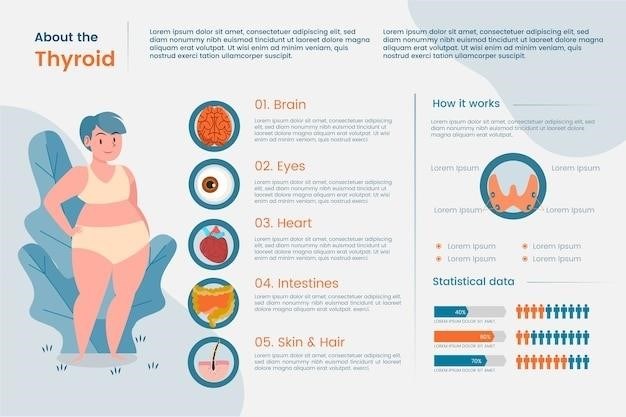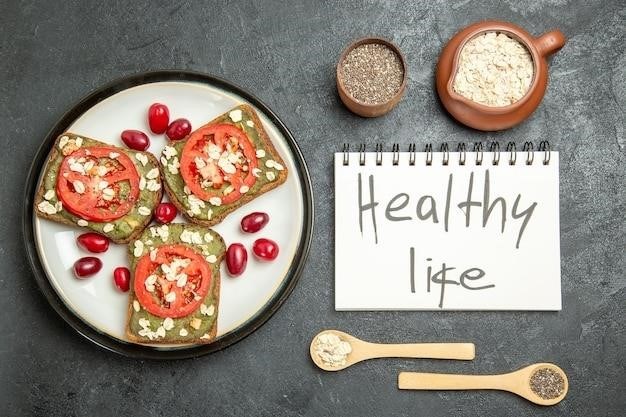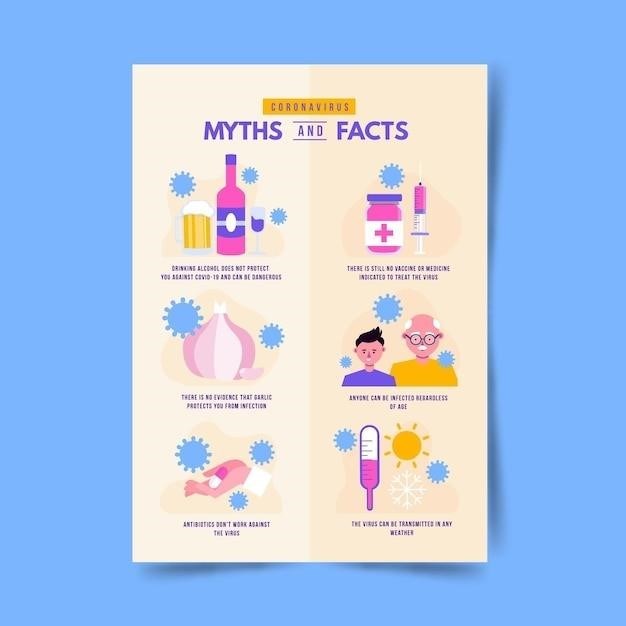hormonal acne diet plan pdf
Hormonal Acne Diet Plan⁚ A Comprehensive Guide
This comprehensive guide provides a detailed look at the hormonal acne diet plan, exploring the connection between diet and acne, identifying foods to include and avoid, and offering sample meal plans and tips for success․ This plan is designed to help individuals manage and potentially reduce hormonal acne through dietary adjustments․
Introduction
Hormonal acne, a common skin condition, is often triggered by fluctuations in hormone levels, particularly during puberty, menstruation, pregnancy, or menopause․ While genetics and other factors play a role, diet can significantly impact the severity of hormonal acne․ This comprehensive guide delves into the relationship between diet and hormonal acne, providing a roadmap for individuals seeking to manage their skin through dietary changes․ By understanding the role of diet in hormonal acne, individuals can make informed choices about their food intake, potentially reducing breakouts and achieving clearer skin․

What is Hormonal Acne?
Hormonal acne is a type of acne that is caused by fluctuations in hormone levels․ These fluctuations can occur during puberty, menstruation, pregnancy, or menopause․ When hormone levels change, they can trigger the sebaceous glands in the skin to produce more oil․ This excess oil can clog pores and lead to the formation of pimples, whiteheads, and blackheads․ Hormonal acne is often characterized by deeper, more painful pimples, and it may appear on the lower face, jawline, and neck․ While genetics and other factors play a role, dietary choices can significantly influence the severity of hormonal acne․
The Role of Diet in Hormonal Acne
While genetics and other factors play a role, diet plays a significant role in hormonal acne․ Research suggests that a diet high in processed foods, sugar, and refined carbohydrates can contribute to inflammation and hormonal imbalances, exacerbating acne․ Conversely, a diet rich in nutrient-dense foods like fruits, vegetables, and lean proteins can help regulate hormone levels, reduce inflammation, and support overall skin health․ By making mindful dietary choices, individuals can potentially reduce the severity and frequency of hormonal acne breakouts․ This guide provides a comprehensive overview of the foods to include and avoid in a hormonal acne diet plan․
Foods to Include in Your Diet
A balanced diet rich in nutrient-dense foods is crucial for managing hormonal acne․ Prioritizing foods that support hormone balance, reduce inflammation, and promote overall skin health can contribute to clearer skin․ This section outlines key food groups to include in your diet, focusing on their specific benefits for hormonal acne․
Low Glycemic Index (GI) Foods
Low GI foods are digested slowly, leading to a gradual rise in blood sugar levels․ This helps stabilize insulin levels, which can contribute to hormonal acne․ Including these foods in your diet can help regulate your body’s hormonal response and potentially reduce breakouts․ Some examples of low GI foods include non-starchy vegetables like broccoli, spinach, and carrots, whole grains like quinoa and brown rice, beans and legumes, and fruits such as apples, berries, and plums․
Protein-Rich Foods
Protein is essential for healthy skin and plays a crucial role in the repair and regeneration of skin cells․ Incorporating protein-rich foods into your diet can help support skin health and potentially reduce inflammation associated with acne․ Good sources of protein include lean meats like chicken and fish, eggs, beans, lentils, tofu, and nuts․ These foods provide essential amino acids that contribute to collagen production, which is vital for skin elasticity and strength․ By ensuring adequate protein intake, you can support your body’s ability to maintain healthy skin and potentially minimize acne breakouts․
Fruits and Vegetables
Fruits and vegetables are packed with antioxidants, vitamins, and minerals that are beneficial for overall health and skin health․ Antioxidants help protect the skin from damage caused by free radicals, which can contribute to inflammation and acne․ Fruits and vegetables are also rich in fiber, which aids in digestion and can help regulate blood sugar levels, potentially reducing inflammation․ Some fruits and vegetables that are particularly beneficial for acne-prone skin include berries, leafy greens, broccoli, carrots, and tomatoes․ These foods are rich in vitamins A, C, and E, which are essential for healthy skin․ By incorporating a variety of fruits and vegetables into your diet, you can provide your body with the nutrients it needs to maintain healthy skin and potentially minimize acne breakouts․
Foods to Avoid or Limit
While certain foods are beneficial for hormonal acne, others can exacerbate breakouts․ These foods often contribute to inflammation, hormone imbalances, and increased sebum production, which can lead to acne․ Dairy products, particularly skim milk, have been linked to acne due to their potential to increase insulin levels and promote inflammation․ Processed foods, often high in sugar, unhealthy fats, and additives, can also trigger acne due to their inflammatory properties․ Sugar and refined carbohydrates, such as white bread and pastries, can cause blood sugar spikes, leading to increased sebum production and inflammation․ It’s important to note that individual responses to these foods can vary, and some people may be more sensitive than others․ By limiting or avoiding these foods, you may notice a reduction in acne breakouts․
Dairy Products
Dairy products, especially skim milk, have been associated with an increased risk of acne․ This is because dairy contains hormones, such as IGF-1 (insulin-like growth factor 1), which can stimulate sebum production and contribute to inflammation․ While some studies suggest that full-fat dairy may be less problematic than skim milk, it’s generally recommended to limit dairy consumption or choose dairy alternatives like almond milk or soy milk․ If you experience acne flare-ups after consuming dairy, consider eliminating it from your diet for a few weeks to see if your skin improves․ However, it’s important to note that individual responses to dairy can vary, and some people may not experience any negative effects․
Processed Foods
Processed foods, often high in refined carbohydrates, unhealthy fats, and added sugars, can wreak havoc on your skin․ These foods trigger inflammation and hormonal imbalances, contributing to acne breakouts․ When you consume processed foods, your body experiences a spike in insulin levels, leading to increased sebum production․ This excess oil can clog pores and create the perfect environment for acne-causing bacteria to thrive․ To improve your skin health, prioritize whole, unprocessed foods like fruits, vegetables, lean proteins, and whole grains․ These foods provide essential nutrients that support overall skin health, while avoiding the inflammatory triggers found in processed foods․ By making this dietary shift, you can minimize the chances of experiencing acne flare-ups due to processed food consumption․

Sugar and Refined Carbohydrates
Sugar and refined carbohydrates, like white bread and pastries, can significantly contribute to hormonal acne․ When you consume these foods, your body experiences a rapid surge in blood sugar levels, followed by a sharp drop․ This fluctuation in blood sugar triggers the release of insulin, a hormone that can stimulate oil production in the skin․ Excess oil can clog pores, leading to breakouts․ Furthermore, refined carbohydrates often lack essential nutrients and fiber, which are crucial for maintaining healthy skin․ By limiting your intake of sugar and refined carbohydrates, you can help stabilize your blood sugar levels, reduce insulin spikes, and minimize oil production․ Opt for whole, unrefined carbohydrates like brown rice, quinoa, and whole grains, which provide sustained energy and essential nutrients without contributing to acne flare-ups․
Sample Meal Plans
To make following the hormonal acne diet plan easier, here are some sample meal plans that incorporate the recommended foods․ These plans provide a balanced approach to nutrition, ensuring you get essential nutrients while avoiding triggers for hormonal acne․ Remember, these are just examples, and you can adjust them to fit your preferences and dietary needs․ Be sure to consult with a registered dietitian or nutritionist for personalized guidance․ The provided meal plans are designed to be flexible, allowing you to swap out ingredients based on your preferences and dietary needs․ They also encourage you to include a variety of whole foods, protein sources, and healthy fats to support overall health and well-being․
Tips for Success
Successfully implementing the hormonal acne diet plan requires more than just understanding the dos and don’ts․ It’s about making sustainable changes to your lifestyle․ Here are some tips to help you succeed⁚
- Be patient⁚ It takes time for your skin to adjust to dietary changes․ Don’t expect overnight results․
- Keep a food diary⁚ Track your meals and any potential acne flare-ups to identify your personal triggers․
- Focus on whole foods⁚ Prioritize whole, unprocessed foods over packaged and processed options․
- Stay hydrated⁚ Drink plenty of water throughout the day to support skin health․
- Manage stress⁚ Stress can exacerbate acne․ Find healthy ways to manage stress, such as exercise, yoga, or meditation․
While the hormonal acne diet plan can be a valuable tool in managing acne, it’s essential to remember that it’s not a one-size-fits-all solution․ What works for one person may not work for another․ It’s crucial to consult with a healthcare professional or registered dietitian to develop a personalized plan that addresses your specific needs and health conditions․ Remember that dietary changes are often most effective when combined with other acne-fighting strategies, such as maintaining a consistent skincare routine and managing stress levels․
